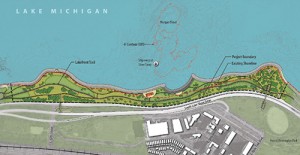Shore Protect Team - Truths
Table of ContentsThe Buzz on Shore Protect TeamThe Buzz on Shore Protect TeamThe Buzz on Shore Protect TeamShore Protect Team Can Be Fun For EveryoneShore Protect Team Can Be Fun For EveryoneShore Protect Team - An OverviewExcitement About Shore Protect Team
Decrease in residential property worth: As the location tourist is influenced by erosion, so then is the economic situation. Customers are much less likely to search for a coastline home that might be damaged at any minute by the upcoming flooding and erosion emergency situation. In turn, home worth can drop profoundly and affect the whole region.Whether a beach is simply small and crowded or has to close entirely for the safety of the environment and nearby homes, this substantially influences tourist. Subsequently, neighborhood economies are affected (https://soundcloud.com/shore-protect-team). Danger of injury: The enhanced risk of flooding and architectural failures creates an increased danger of injury to nearby visitors and area members

Coastline stabilization is directly related to their work. Waterside resorts: Due to the fact that shoreline disintegration influences tourist, it impacts the success of beachfront resorts.
Shore Protect Team Things To Know Before You Buy
This eventually leads to closures and deserted beachfront residential or commercial properties. Coastal commercial services: No travelers means no organization. For those services satisfying locals, their residential property is at risk of damage from erosion and flooding. Coastal state parks: State parks that exist along coasts are at danger of damage. Not just to the manmade structures and residential or commercial properties on website, however additionally to the all-natural ecological communities that exist within.
Hard stabilization uses manufactured frameworks as security to manage disintegration. Many forms of hard stabilization like seawalls and sheet metal are not ideal for shoreline stabilization.
Facts About Shore Protect Team Revealed
There's also not sufficient proof of their efficiency depending on the sort of coastline and neighborhood problems. Difficult stablizing strategies tend to be more hard to set up and don't match the natural visual, standing out like a sore thumb and damaging regional ecological communities in numerous circumstances. Beach nutrition is the process of including shed sand and debris back to beaches after disintegration has actually happened.
TrapBags aid in the process of coastline nutrition by protecting all-natural environments and allowing plants to grow. While this procedure can be costly and is not long-term, the pros often tend to surpass the cons. TrapBag obstacles deal lots of homes that make them ideal for coastal and riverbank disintegration security. They're: Eco-friendly: You can use native soil both to border and to fill the TrapBags.

More About Shore Protect Team
Easy to install: Ease of installation indicates TrapBags can be deployed promptly in the occasion of an emergency. They can also be mounted without any hefty machinery. Cost effective: TrapBags are excellent for both little and large locations of shoreline. They offer a budget-friendly solution to cover projects of any kind of size.
The suitable seawall style relies on location-specific aspects, consisting of bordering disintegration procedures. There are three major kinds of seawalls: vertical, rounded, tipped, and piles (see table below).
Natural barriers, such as reef and mangrove woodlands, prevent the spread of tsunamis and the flow of coastal waters and mitigated the flood and surge of water. A cost-benefit strategy is an efficient way to identify whether a seawall is suitable and whether the benefits are worth the expense.
The Definitive Guide to Shore Protect Team
A seawall is a fixed feature which can conflict with the vibrant nature of the coastline and hamper the exchange of sediment in between land and sea. Advantages and negative aspects of seawalls according to Short (1999) Advantages Negative aspects Long term remedy in contrast to soft coastline nourishment (https://directory9.biz/details.php?id=305201).

This can trigger coastlines to dissipate, making them ineffective for coastline goers. Typically, seawalls can be an effective way to regulate coastal erosion, yet only if they are built well and out of materials that can withstand the force of continuous wave energy.
Shore Protect Team Can Be Fun For Anyone
Combined with a high construction price, this has actually caused boosting use of other soft design seaside monitoring options such as beach replenishment. Seawalls are constructed from different materials, most commonly enhanced concrete, stones, steel, or gabions. Various other possible building and construction products include vinyl, wood, aluminum, fiberglass composite, and eco-friendly sandbags constructed from jute and coir. The appropriate seawall design relies upon location-specific elements, including bordering disintegration processes. There are three primary types of seawalls: upright, rounded, tipped, and mounds (see table below). A record published by the United Nations Atmosphere Programme (UNEP) recommends that the tsunami of 26 December 2004 created less damages in the areas where all-natural barriers were present, such as mangroves, reef or seaside plant life.
Natural barriers, such as coral reefs and mangrove forests, stop the spread of tidal waves and the flow of coastal waters and reduced the flood and surge of water. A cost-benefit method is a reliable way to figure out whether a seawall is suitable and whether the benefits are worth the expenditure.
The 3-Minute Rule for Shore Protect Team
A seawall is a static function which can conflict with the vibrant nature of the coastline and hamper the exchange of sediment in between land and sea. Advantages and downsides of seawalls according to Short (1999) Advantages Disadvantages Long term solution in contrast to soft coastline nutrients.

This can create beaches to dissipate, making them useless for coastline goers. Generally, seawalls can be a successful method to manage seaside erosion, yet just if they are built well and out of products that can hold up against the force of recurring wave power.